Health Benefits of Little Millet Noodles:
- Rich in Nutrients:
- High Fiber Content: Little millet is rich in dietary fiber, which aids in digestion, helps manage weight, and controls blood sugar levels.
- Good Source of Protein: It contains about 9% protein, which helps in muscle building and overall body function.
- Essential Minerals: Little millet is a good source of magnesium, phosphorus, and iron, which are important for bone health, energy production, and immune function.
- Gluten-Free: Little millet is naturally gluten-free, making it suitable for people with celiac disease or gluten sensitivity.
- Low Glycemic Index:
- Little millet has a low glycemic index, meaning it releases sugar slowly into the bloodstream, making it an excellent choice for people with diabetes or those looking to manage their blood sugar levels.
- Antioxidants:
- It contains polyphenols and antioxidants that help in reducing oxidative stress, which can prevent chronic diseases like heart disease and cancer.
- Weight Management:
- Being high in fiber and relatively low in calories, little millet noodles can help you feel full for longer, aiding in weight management and preventing overeating.
How Little Millet Noodles Are Made:
The process of making little millet noodles can vary slightly depending on whether you start with millet flour or cooked millet grains. Here’s an overview:
- Using Little Millet Flour:
- Step 1: Millet grains are cleaned, de-hulled, and milled into flour.
- Step 2: The flour is mixed with water and sometimes salt to form a dough.
- Step 3: The dough is then extruded through a noodle press or machine to form noodles.
- Using Cooked Millet:
- Step 1: Little millet grains are cooked and then mashed or blended into a smooth mixture.
- Step 2: This mixture is combined with a small amount of flour or starch to bind the noodles.
- Step 3: The dough is shaped into noodles using a press or by hand.
- Drying and Packaging:
- The noodles can be dried and packaged for later use, similar to commercial pasta, or they can be cooked fresh.
Cooking with Little Millet Noodles:
Little millet noodles can be used in various dishes that typically call for traditional noodles or pasta. Here are some ideas:
- Stir-Fries:
- Toss little millet noodles with sautéed vegetables, tofu, or chicken and a light sauce made from soy, sesame oil, and garlic.
- Salads:
- Use cooked, cooled little millet noodles in salads with fresh vegetables, a tangy dressing, and some crunchy toppings like nuts or seeds.
- Soups:
- Add little millet noodles to soups or broths for a nutritious twist on noodle soups. They pair well with vegetable broths, chicken broth, or even miso soup.
- Curry Noodles:
- Serve little millet noodles with a coconut or tomato-based curry for a flavorful and hearty meal.
- Pasta Dishes:
- Substitute little millet noodles for pasta in dishes like spaghetti or pad thai.
Storage and Availability:
- Storage: Dried little millet noodles should be stored in an airtight container in a cool, dry place. Fresh noodles can be refrigerated and should be used within a few days.
- Availability: Little millet noodles can be found in health food stores or specialty markets, especially those that focus on gluten-free products or traditional grains. You may also find them in online stores or as part of artisanal food brands that focus on ancient grains.









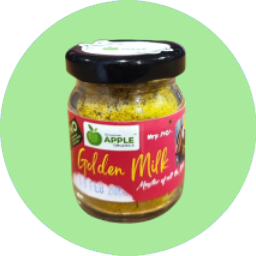












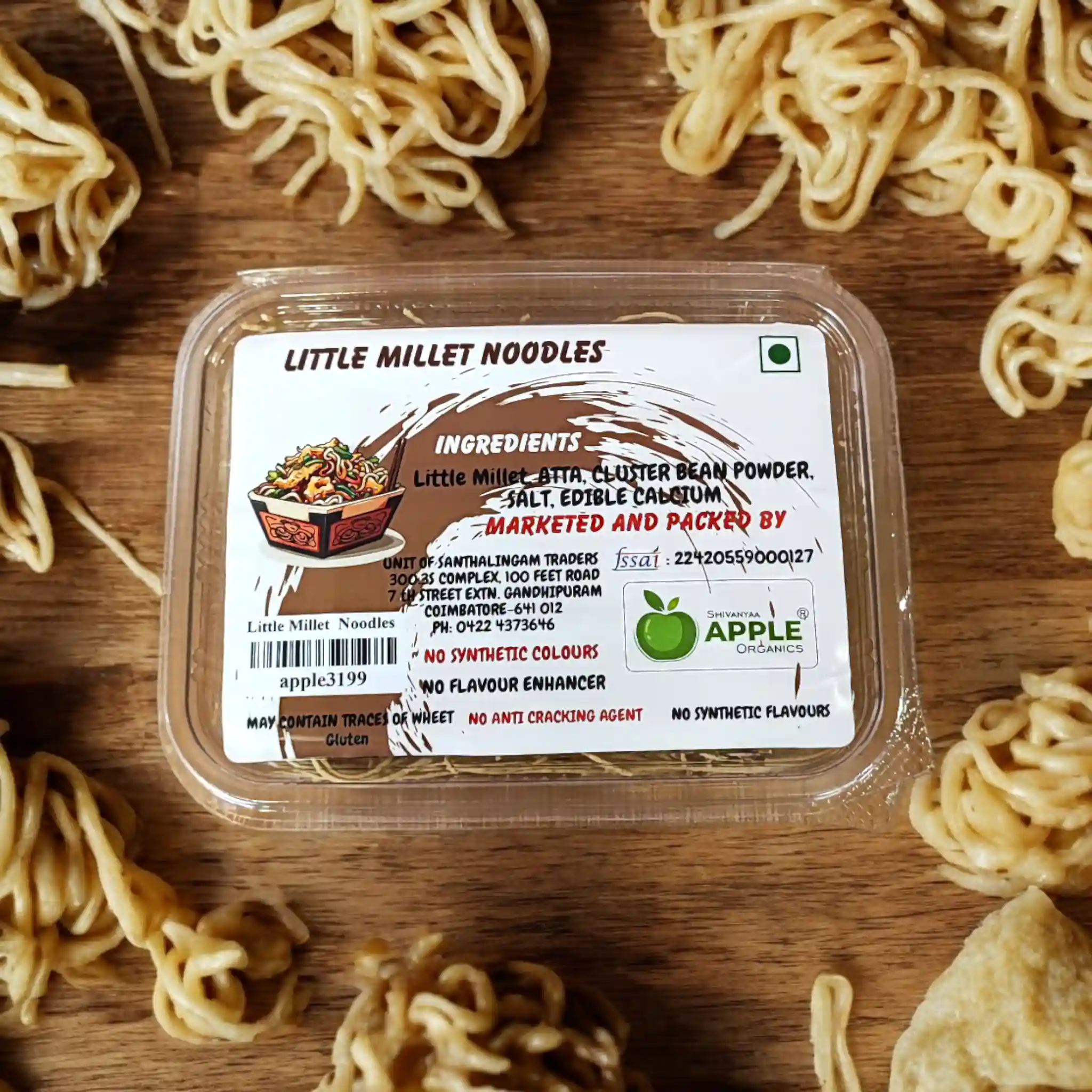
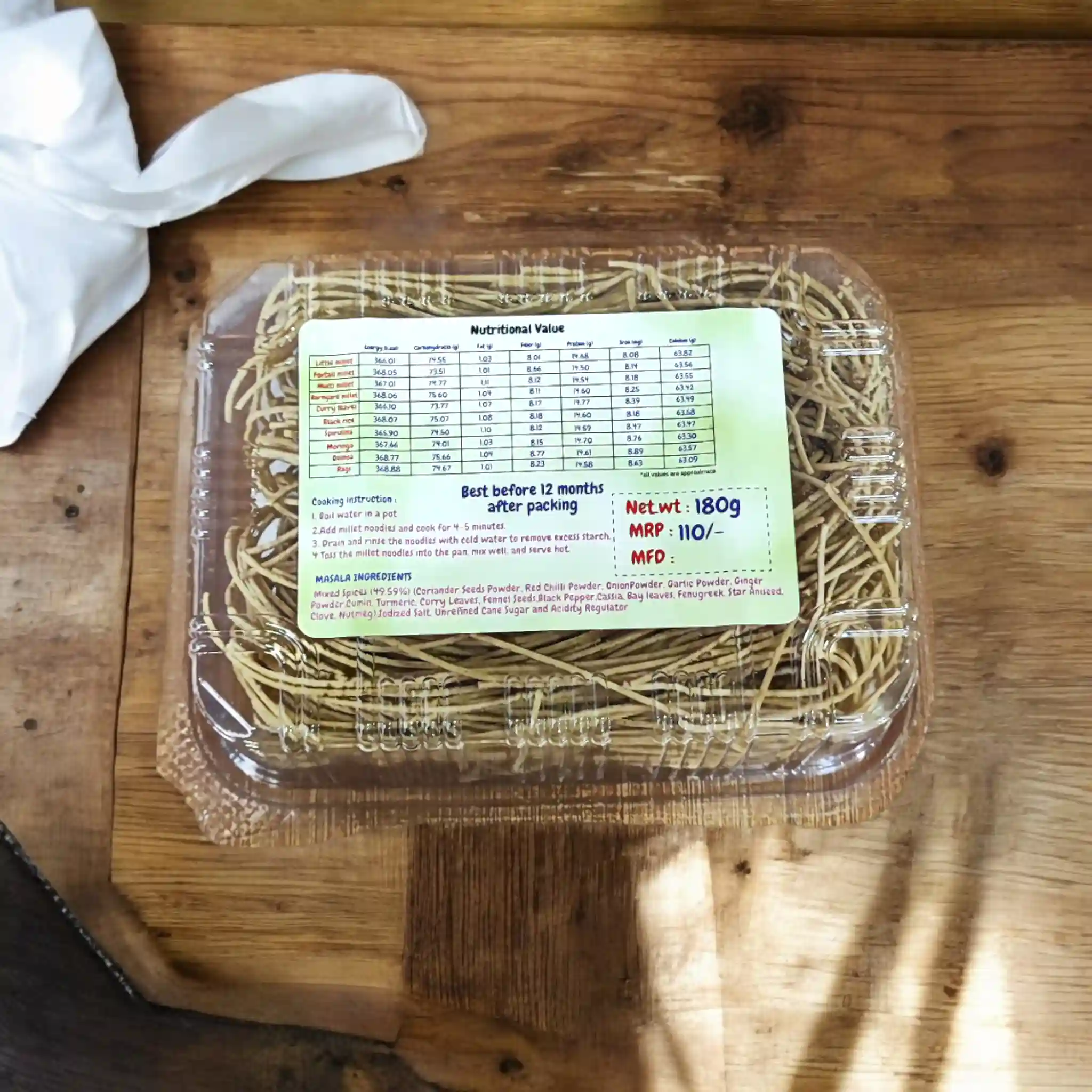
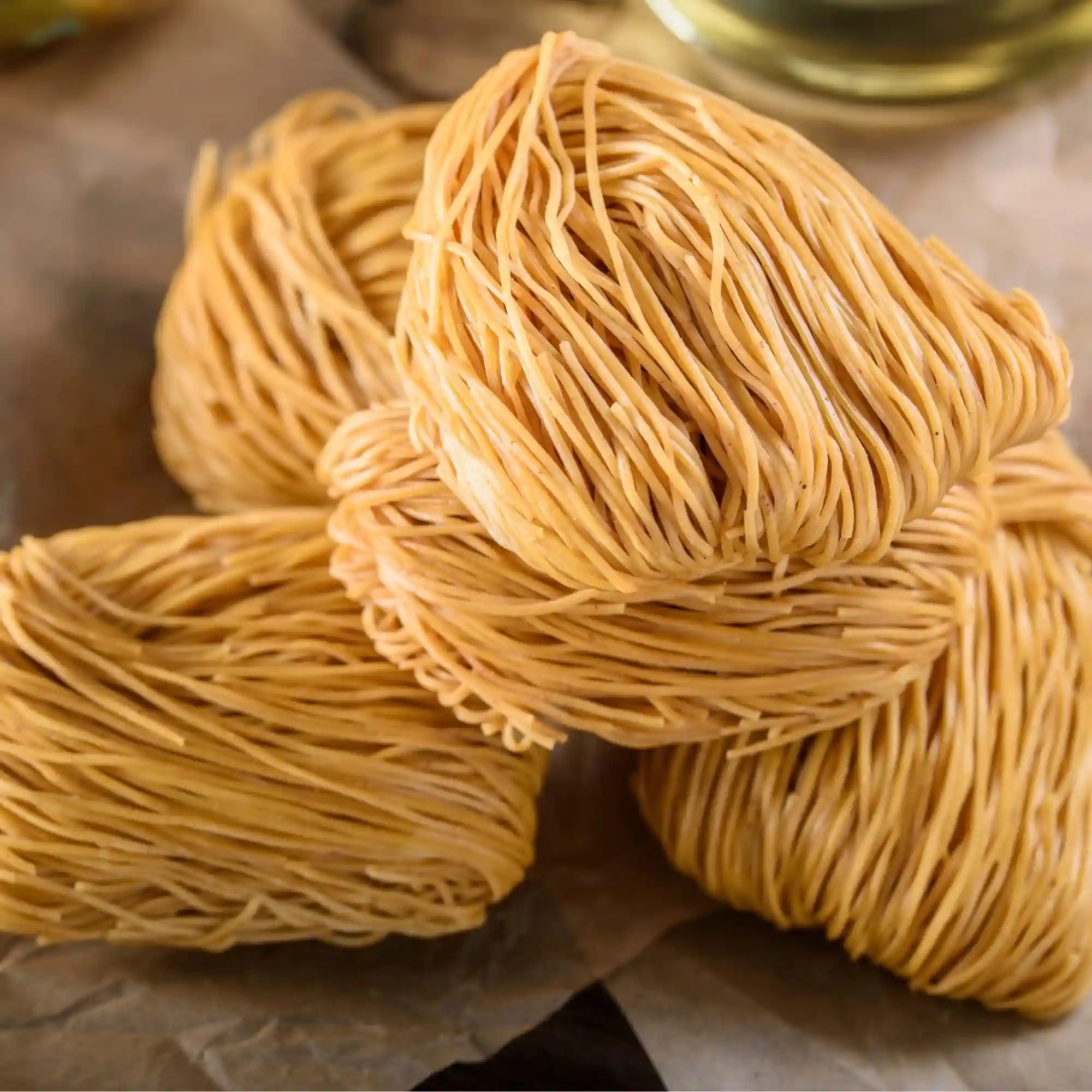
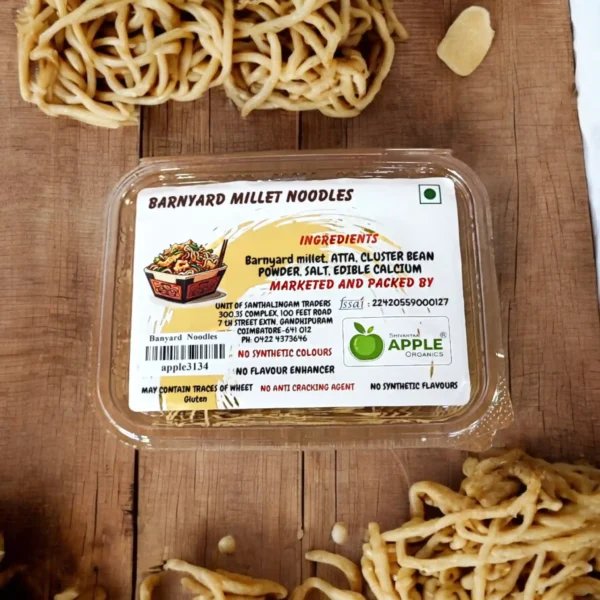

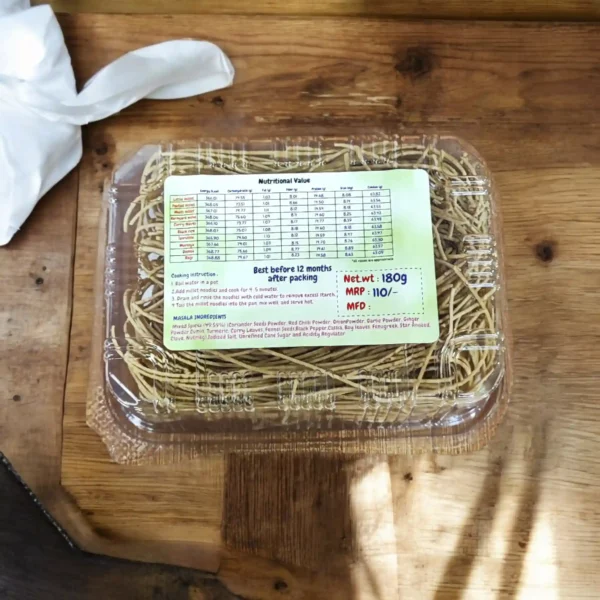

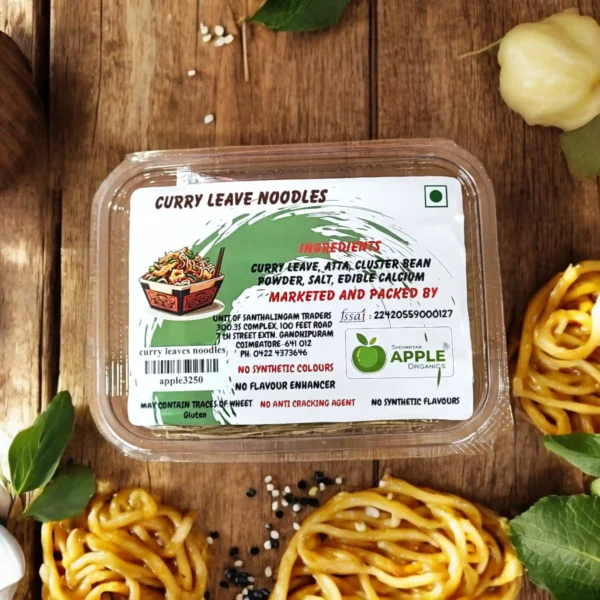
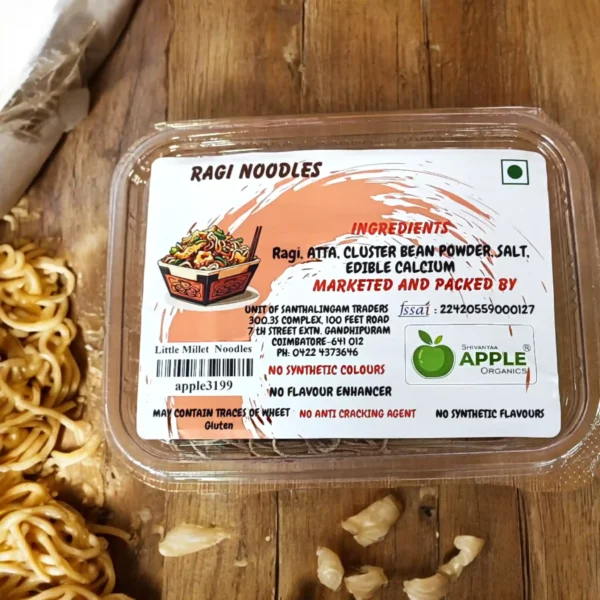



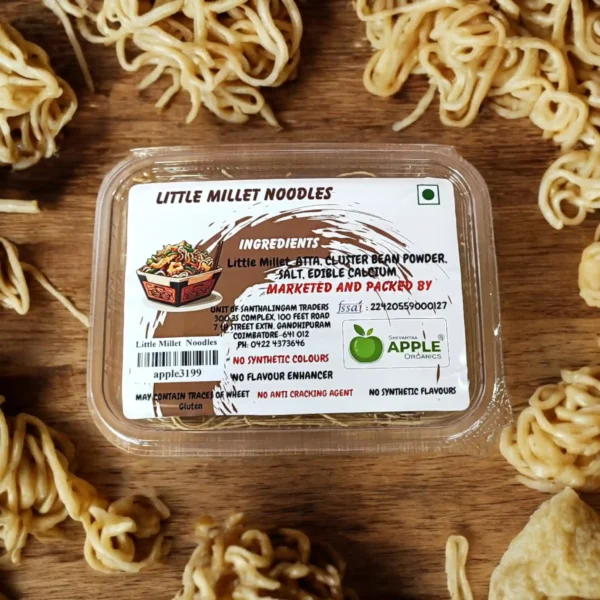
Reviews
Clear filtersThere are no reviews yet.